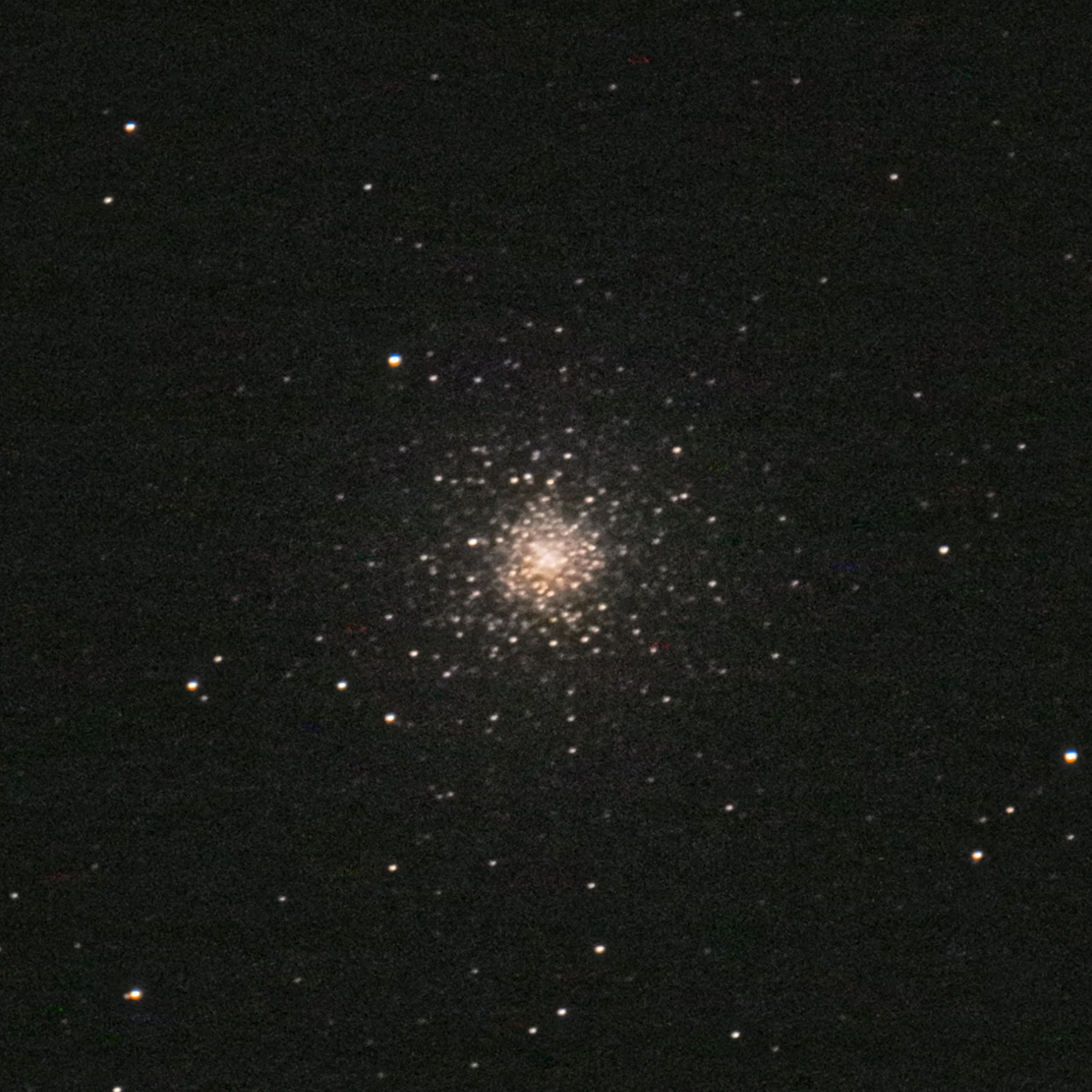M2 - Globular Cluster
Type: Globular Cluster
Discoverer: Jean-Dominique Maraldi, 1746
Size: 87.3 ly
Distance: 40,850 ly
Age: 12.5 Billion Years
Constellation: Aquarius
My Notes: On Aug. 25, 2024 at 21:50, I captured M2 at Branched Oak Lake, near Malcolm, Nebraska.
It is one of the first new object captures with my Nikon Z8 and the 800mm f6.3 lens. I have high hopes for the lens with its 120mm front diameter optic and the camera’s full-frame sensor. About a month ago, I tried using it, but had forgotten what settings to use since it had been over a year since I’d imaged anything. I got a higher-quality photo of M57, but failed to get an improvement to M27 (both were just to check the alignment of my tracker). I then tried to capture M16, but was very disappointed by the results (read more on that object’s page). After waiting a fortnight for the moon and the weather to cooperate, I’m out again trying this camera/lens combo.
I didn’t think I needed to go too long on the exposure times since for this since the stars were quite distinct in the test photos; the same goes for the number of exposures. There’s not a ton of detail to be found in a globular cluster. However, after reading about this object, I see that it actually is one of the most detailed
It took me a while to find it because my alignment was wrong. On my first attempt, I was pointing at a star and was thinking that I just wasn’t able to resolve the individual stars which was really disappointing given my hopes for the Nikon z8 and 800mm lens. After realigning, a blank part of the sky was in my field of view on the next attempt. Sure enough, the stars were easy to see. I ended up taking a fair number of exposures to compensate for the unstable atmosphere in the hopes of having at least some crisp images.
It was originally discovered by Maraldi in 1746. Messier rediscovered it and added it to his catalogue 14 years later to the day, on September 11, 1760. William Herchel was the first to resolve it into stars, another 23 years later. Maraldi was very close in his observation, believing it to be many stars too small to be seen.
I processed it with my old, tried and true software for Macs, Starry Sky Stacker, but after going down an editing rabbit hole with M16, I tried with different software called Siril. It turns out not all stacking software is made equal. The quality differences were significant enough to make me question whether or not I should go back and re-edit some old photos to see if I can pull out more detail with Siril. I reprocessed this Globular Cluster and got more detail and more natural colors using Siril. I’ve included both versions below. As such, I’ll start including the name of the software I edited with going forward on all objects.
Messier Notes: (Sept. 11th, 1760) ‘Nebula without star, centre brilliant; surrounded by a circular light resembling the nucleus of a comet.’
Maraldi Notes: (Sept. 11th, 1746) ‘This one is round, well terminated and brighter in the centre… and not a single star around it to a pretty large distance; none can be seen in the whole field of the telescope. This appears very singular to me, for one of the stars one calls nebulous are surrounded by many stars, making one think that the whiteness found there is the effect of the light of a mass of stars too small to be seen in even the largest telescopes. I took, at first, this nebula for the comet’
Herchel Notes: ‘A cluster of very compressed, exceedingly small stars.’
M2 - Edited in Siril - 53 frames at 10 sec (00:08:50 total exposure) ISO 1250 f/6.3 800mm - Nikon Z8 Nikkor z800
M2 - Edited in Starry Sky Stacker - 43 frames at 10 sec (00:07:14 total exposure) ISO 1250 f/6.3 800mm - Nikon Z8 Nikkor z800
M2 with no crop at 800mm full frame



